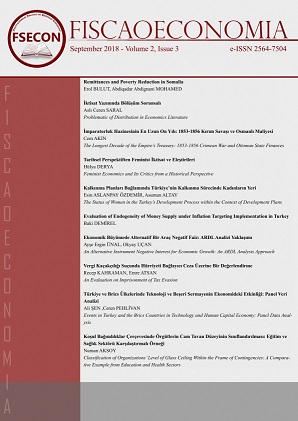Koşul Bağımlılıklar Çerçevesinde Örgütlerin Cam Tavan Düzeyinin Sınıflandırılması: Eğitim ve Sağlık Sektörü Karşılaştırmalı Örneği
Classification of Organizations’ Level of Glass Ceiling within the Frame of Contingencies: A Comparative Example from Education and Health Sectors
Author(s): Numan AksoySubject(s): Gender Studies, Supranational / Global Economy, Business Economy / Management, Economic development, Human Resources in Economy
Published by: Ahmet Arif Eren
Keywords: Gender Inequality; Glass Ceiling; Chosen Contingencies;
Summary/Abstract: Gender inequality encountered worldwide, also visibly exists in organizations as a problem. The entire global workforce bears signs of gender discrimination. Women occupy much fewer managerial positions when compared with men. Women work in organizations in low hierarchy and less responsible jobs, and are paid lower wages. The situation of women who are not given a chance for promotion in organizations, is depicted figuratively by a transparent barrier. The barriers, which invisibly hinder women from rising in the organizational levels are mentioned as glass ceiling in the literature. This study is an investigation into the way several chosen contingencies affect the perception of glass ceiling in women. The industry which the organization belongs, socialization provided by the family, whether the organization is in the public or private sector, women’s marital status, number of children, and the establishment date of the organization are the selected micro and macro contingencies. These contingencies show in which situations women’s perception of glass ceiling increase or decrease and thus provide a way for classification. In this research a comparative analysis of women’s perception of glass ceiling in the health and education sectors has been carried out. The above cited sectors have been chosen to make a comparison between a sector which can be traditionally accepted as women’s field and a sector which can be regarded as outside of this field. A glass ceiling questionnaire was answered by women in these sectors and the results supported the previous arguments of the literature.
Journal: Fiscaoeconomia
- Issue Year: 2/2018
- Issue No: 3
- Page Range: 226-253
- Page Count: 28
- Language: Turkish

